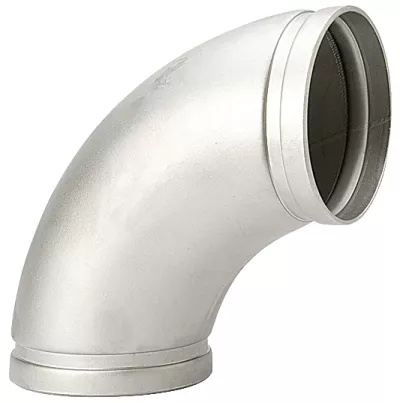

Grooved pipe fittings have become a popular joining method in commercial, industrial, and mechanical piping systems due to their speed, flexibility, and efficiency. These fittings connect pipes by engaging a grooved coupling around the pipe ends, which are machined or roll-grooved to accept the coupling housing.
While grooved systems offer many benefits, especially for contractors and system designers, they also have limitations that should be considered depending on your application.
Advantages of Grooved Pipe Fittings
- Fast and Easy Installation
Grooved fittings are known for their quick assembly and disassembly, requiring no welding, threading, or flanging. This makes them ideal for fast-track projects and systems that may need to be modified in the future.
- Flexible and Self-Restraining System
The couplings allow for a degree of flexibility and deflection, which can accommodate thermal expansion, contraction, vibration, and misalignment, reducing system stress and potential leaks.
- Lower Labor and Equipment Costs
Because grooved joints don’t require hot work, less skilled labor and fewer tools are needed for installation. This helps lower labor costs and minimizes safety hazards on-site.
- Ease of Maintenance and Reconfiguration
Systems using grooved pipe fittings are easy to inspect, maintain, or reconfigure, making them ideal for applications that demand frequent access or layout changes, like HVAC systems, fire protection, and modular process plants.
- Minimal Downtime
Grooved systems enable quick shutoffs, replacements, or reroutes with minimal disruption, making them especially valuable in facilities where uptime is critical.
Disadvantages of Grooved Pipe Fittings
- Not Ideal for High-Pressure Applications
Grooved fittings are typically limited to low- and medium-pressure service, depending on the system design and coupling type. They're not usually recommended for high-pressure pipelines.
- Requires Precise Grooving
The pipe ends must be roll-grooved or cut-grooved accurately to meet manufacturer specs. Improper grooving can result in gasket failure or joint leaks.
- Potential for Gasket Wear or Degradation
Gaskets, while effective, are subject to wear, aging, and chemical compatibility issues. Over time or under the wrong conditions (e.g., chemical attack, high heat), they may require replacement.
- Limited Pipe Size and Material Compatibility
Grooved systems are most commonly used with carbon steel, ductile iron, copper, and stainless steel in sizes from 1" to 24" (larger sizes are available but are less common). Availability for specialty materials or thick-walled pipes is limited.
- Higher Material Cost Per Joint
While labor costs are lower, the per-unit cost of grooved fittings and couplings may be higher than traditional threaded or welded components, especially in small-diameter systems.
Typical Applications
Grooved fittings are especially well-suited for:
HVAC systems
Fire protection (sprinkler) systems
Industrial water lines
Modular and prefabricated piping
Commercial mechanical rooms
Mining and process piping with vibration or movement
When to Choose Grooved Fittings
Use grooved pipe fittings when your system:
Needs quick and flexible installation
Requires modular or reconfigurable layouts
Operates in low to medium pressure ranges
Demands minimal system downtime for maintenance
Is subject to thermal movement or vibration
Final Thoughts
Grooved pipe fittings have proven themselves as a smart, modern alternative to traditional piping connection methods, especially where installation speed, system flexibility, and future access are key concerns. While they’re not suitable for all conditions—particularly high-pressure or chemically aggressive environments—they offer significant benefits in terms of cost, time, and adaptability.

